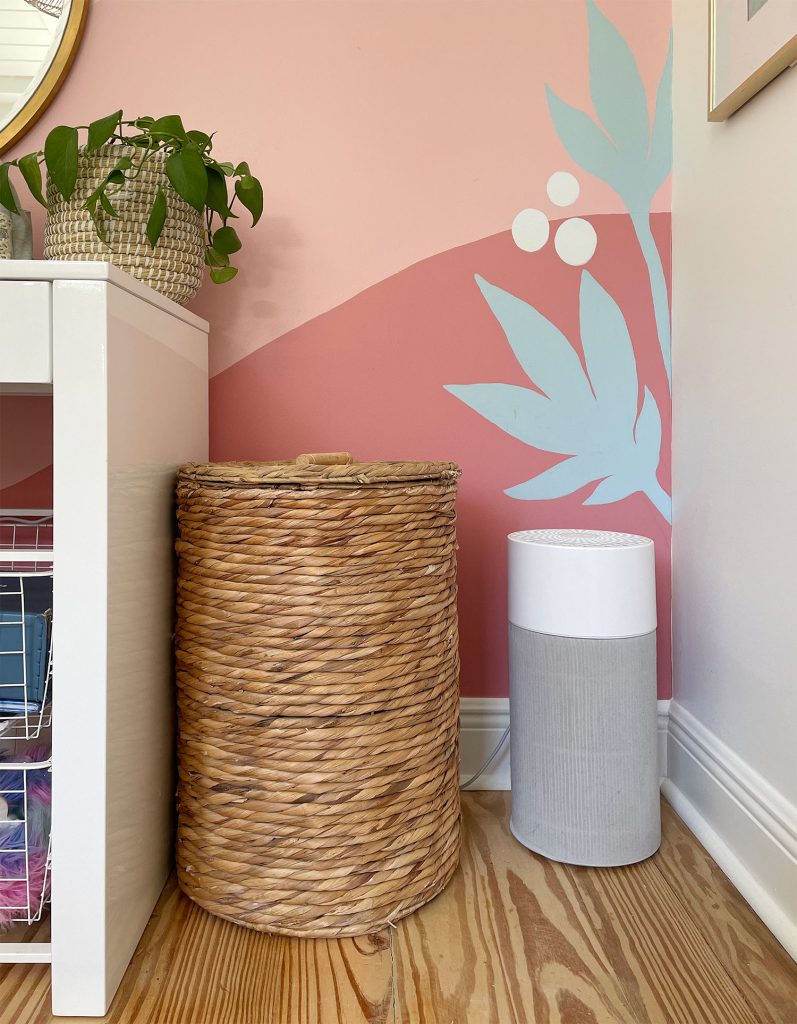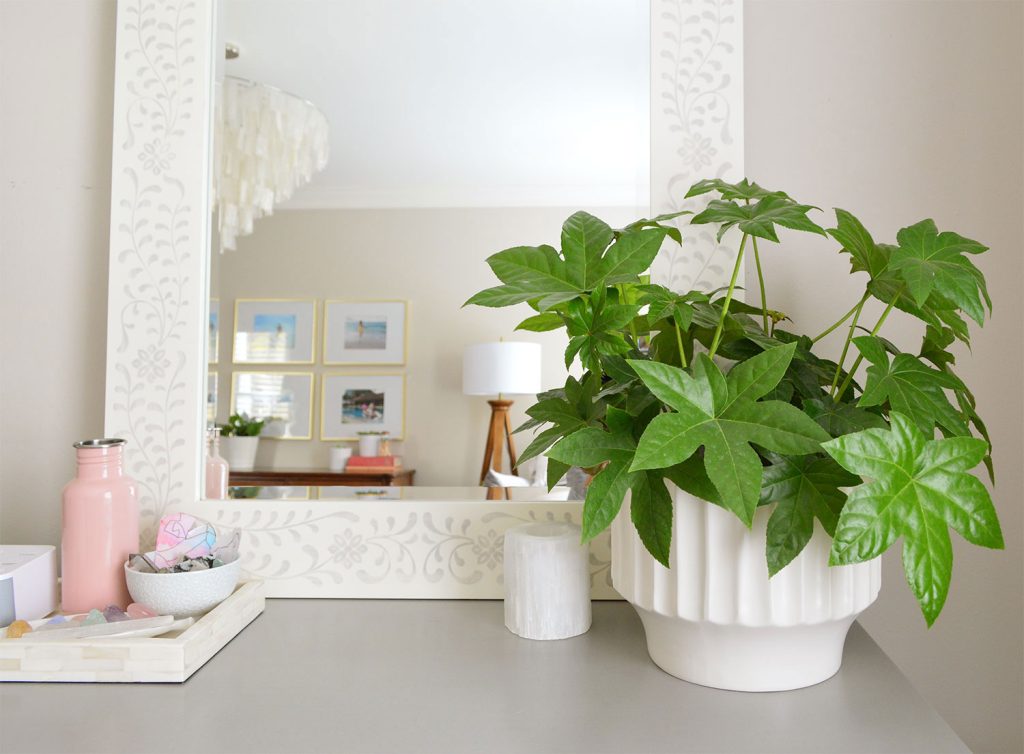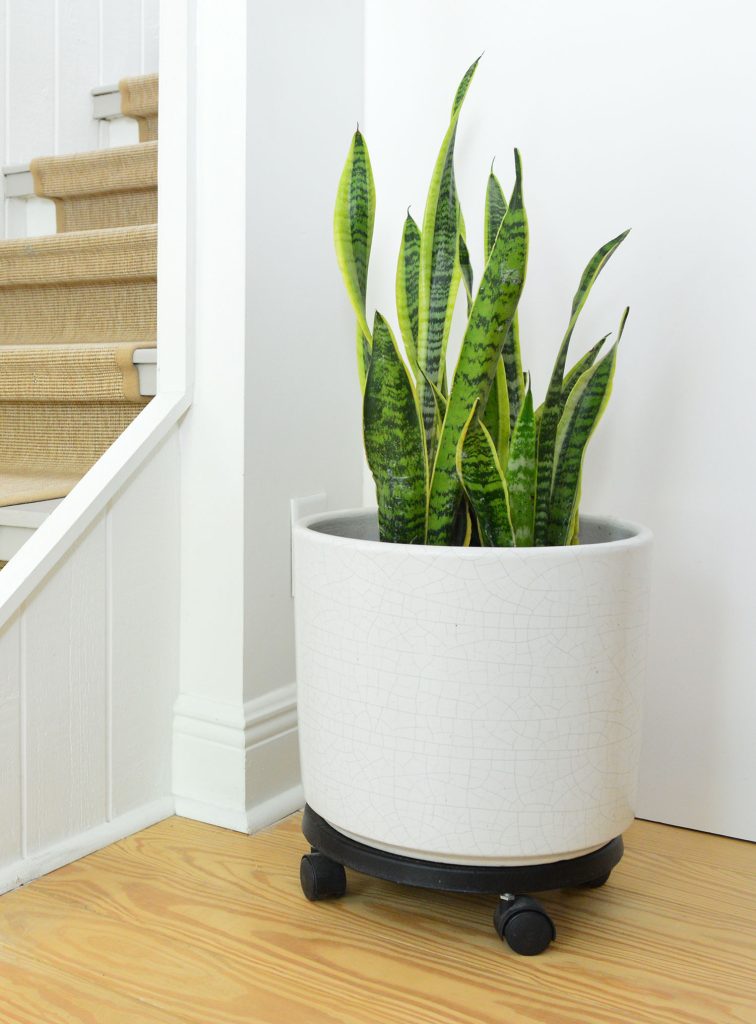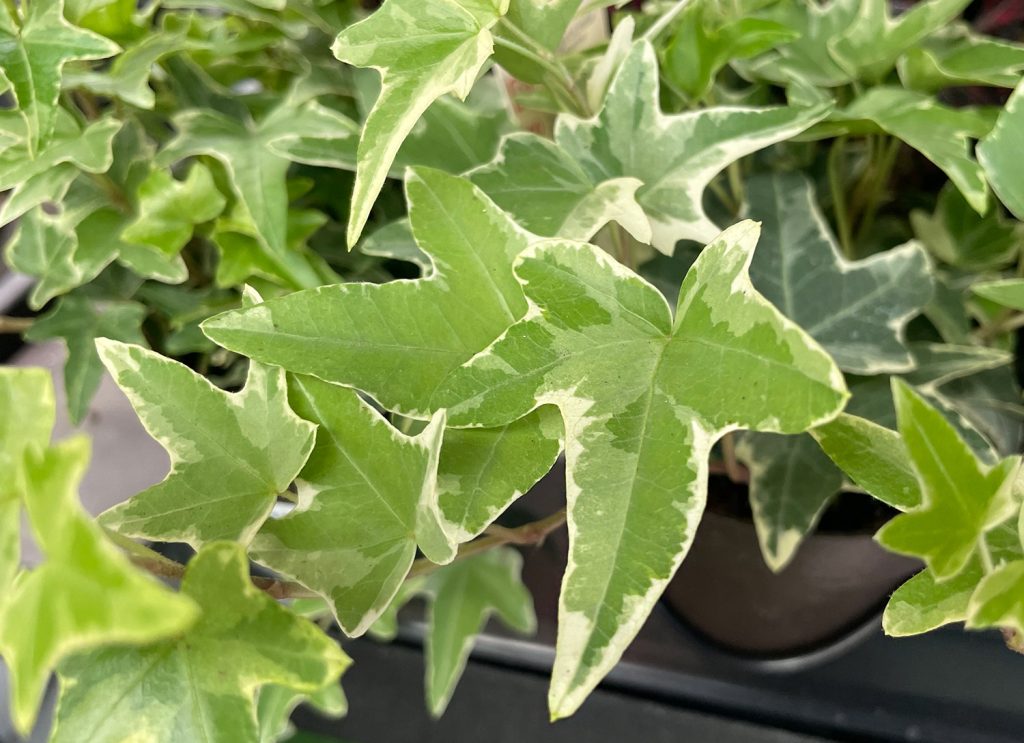
We love any excuse to buy more plants, and you may have heard they can improve your home’s indoor air quality. But before you blow your paycheck in the name of a healthier home, let’s dive deeper into plants’ air purifying powers. We’ll share which plants we recommend and what benefits you can actually expect from them.

We’ve heard for years about how plants act as natural air filters for your home. So let’s dive a little deeper, shall we?
7 Air Purifying Plants
If you just came here for a list, our favorite air purifying houseplants are bulleted below. The best part is these are all beautiful, low-maintenance plants. Many also appear on our best low-light indoor plants list too!
- Dracaena (including Corn Plant)
- Snake Plant
- Aglaonema
- English Ivy
- Pothos
- Bamboo Palm
- Spider Plant
There are certainly more that could be included here, but we narrowed it to the ones that are most often cited by experts AND the plants that we think look best too.
Do Plants Really Purify The Air?
They do! Plants not only convert carbon dioxide to oxygen, but they also remove harmful VOCs like benzene and formaldehyde from the air. This was most famously proven in a 1989 NASA study. It’s often cited as definitive evidence that plants are the secret to better air quality in your home. Unfortunately, the truth is a bit more complicated.


NASA’s closed lab conditions aren’t a good indicator of what plants do in real homes. Houses aren’t sealed, air-tight boxes. Your indoor air is regularly exchanged thanks to activities like opening doors and running HVAC systems. These do a much better job of improving air quality than any plant ever could. In fact, recent studies have concluded that you’d need hundreds or even thousands (!!!) of plants in your home to achieve the air purification levels reported by NASA.
What Benefits Do Houseplants Have?
Luckily, plants are still beneficial additions to your home – even if they aren’t air-purifying workhorses. Beyond their pretty aesthetics, they have a variety of psychological health benefits!
Plants Improve Mood
Spending time near houseplants has been scientifically proven to boost positive emotions and quell negative feelings in as little as 20 minutes. When compared to rooms without plants, people report everything from increased happiness, greater life satisfaction, and a more positive outlook.


Plants Reduce Stress
One study demonstrated that caring for plants was able to reduce stress in participants, as compared to a computer task. Another study showed that exposing hospital patients to plants – even pictures of them! – reduced their stress. And adding plants to a windowless office not only lowered stress, but increased productivity among some test subjects!
Plants Improve Productivity & Concentration
Some also say these improvements in mood and lowered stress help us with productivity and concentration as well. A small study of elementary school students showed looking at plants increased their attentiveness and comfort in the classroom. Another study showed plants help stave off “attention fatigue” during demanding office tasks.
We could go on, but we think that this shows there are more than enough reasons to justify your next plant purchase.
How To Purify Indoor Air
If plants aren’t your ticket to better indoor air quality, what is? Here are some tips from experts at the EPA and American Lung Association.
Reduce pollutants coming in
The best thing we can do to improve air quality is not introduce pollutants in the first place. Eliminate or cut back activities like smoking and using natural gas stoves. Even burning candles or using fireplaces has been shown to decrease air quality. Pay attention to VOCs and off-gassing from products like paints, sprays, and even furniture and clothes. If a new product we buy ever has a noticeable “new” smell, we leave it outside in the sun to let it air out.
Open a window
Opening doors or windows for as little as 10 minutes a day is a great way to let fresh air inside, since outdoor air is typically cleaner than indoor air. This is a free method that is recommended by experts even in the winter.
Purchase an air purifier
Home air purifiers do the job you hoped plants would. They are workhorses for removing dust, pollen, VOCs, and more. We’ve sworn by this air purifier for years and have several in our home. You can read more about why we love it here.


Keep a clean house
Dust and dander can aggravate allergies, so regularly vacuuming, dusting, and washing bedding are great ways to help clear your indoor air. Also be sure to clean wet areas that might grow mold or mildew.
Change your HVAC filter
It’s typically recommended that you change the filter on your heating and cooling system every 3 months. Put a reminder on your phone so you don’t forget. We always keep a spare filter on hand so we’ve got it ready! The second we pop the last one in, we order the next one.
Test for radon & carbon monoxide
Our first two homes had high levels of radon, a cancer-causing gas released from within the earth. We had to have mitigation systems installed in our crawl spaces. So whenever you move, use a cheap at-home test kit to see if your location has high levels. We also recommend having a carbon monoxide detector to alert you to leaks of this deadly gas.


Shrink your plant collection
We know, you came here looking for new plants, not to be told to get rid of them. But remember that plants – when not properly maintained – can be counterproductive to your air-purifying goals. Wet soil and rotted roots can foster mold. Leaves collect dust. And, oh yeah, blooms may trigger allergies. So make sure your plant collection isn’t so large that you can’t care for them.
Plants For A Healthier Home
I feel like this post has been a buzzkill, so let’s get back to the fun stuff: PLANTS! Now that we understand houseplants are good for us (just not in the ways we thought) here are some of our faves. They’re easy to care for, many are low-light tolerant, and guess what? You can still tell everyone they’re purifying your air, because they are… just a little bit.
Dracaena


Dracaena is the category of plant most often cited in that infamous NASA study. Three species were studied, including the popular corn plant (Dracaena fragrans ‘Massangeana’) as well as the dragon tree (Dracaena marginata), and two varieties of Dracaena deremensis (Janet Craig and Warneckii). We love them because they’re easy, affordable, and have vibrant green foliage.
Snake Plant


Snake plants are another super popular, low-light tolerant plant that is technically a Dracaena also. NASA listed it by its old genus Sansevieria, but it’s now classified as Dracaena trifasciata. They’re special for their ability to convert CO2 overnight, making them better oxygen producers. But just like their air purifying effects, you likely won’t notice the difference, but people still like to put snake plants in their bedrooms for an overnight oxygen boost.
Aglaonema


Aglaonema are some of our favorite low-light tolerant plants (NASA uses the common name Chinese Evergreen in their study). Their big tropical leaves come in a variety of bright colors, and they’re remarkably easy to care for. Again, their air-purifying skills might be dubious, but these sure are great mood boosters in our home!
English Ivy


As one of the few vining plants in the NASA study, English ivy (Hedera helix) was one of its best performers in the lab environment. It is also very easy to care for and tolerate low-light conditions.
Pothos


The other vining plant in the study – and our very favorite houseplant – is the golden pothos (Epipremnum aureum). We have pothos varieties in nearly every room of our home because they’re tough to kill (they’re often called Devil’s Ivy) and look great draping off a shelf or climbing atop a bookcase. Above you can see a golden pothos next to one of our neon pothos plants.
Bamboo Palm
Bamboo palms (Chamaedorea seifritzii) are great indoor-friendly palms that can grow up to 8ft tall inside. They’re a bit larger than another low-light variety, called parlor palms. We have so many palms outdoors in our part of Florida that we don’t have any of these inside, but they’re a great way to inject a tropical vibe to any room.
Spider Plant


Spider plants (Chlorophytum comosum) are small, grassy houseplants that are super popular because of their lush, variegated leaves. They’re very easy to care for and are a great alternative to a pothos if you want something for a shelf or tabletop that doesn’t vine.
More Plant Guides


If you’re looking for more information on some of our favorite plants, check out some of these posts below:
*This post contains affiliate links, so we may earn a small commission when you make a purchase through links on our site at no additional cost to you.







